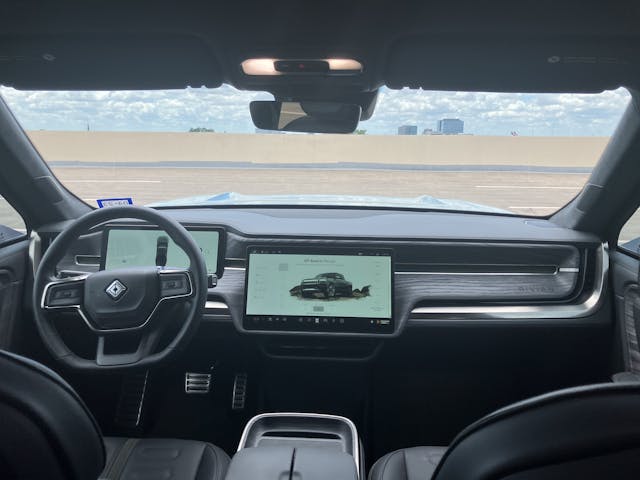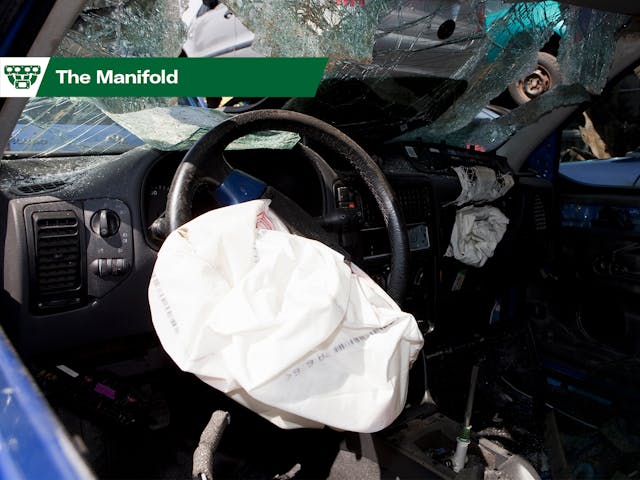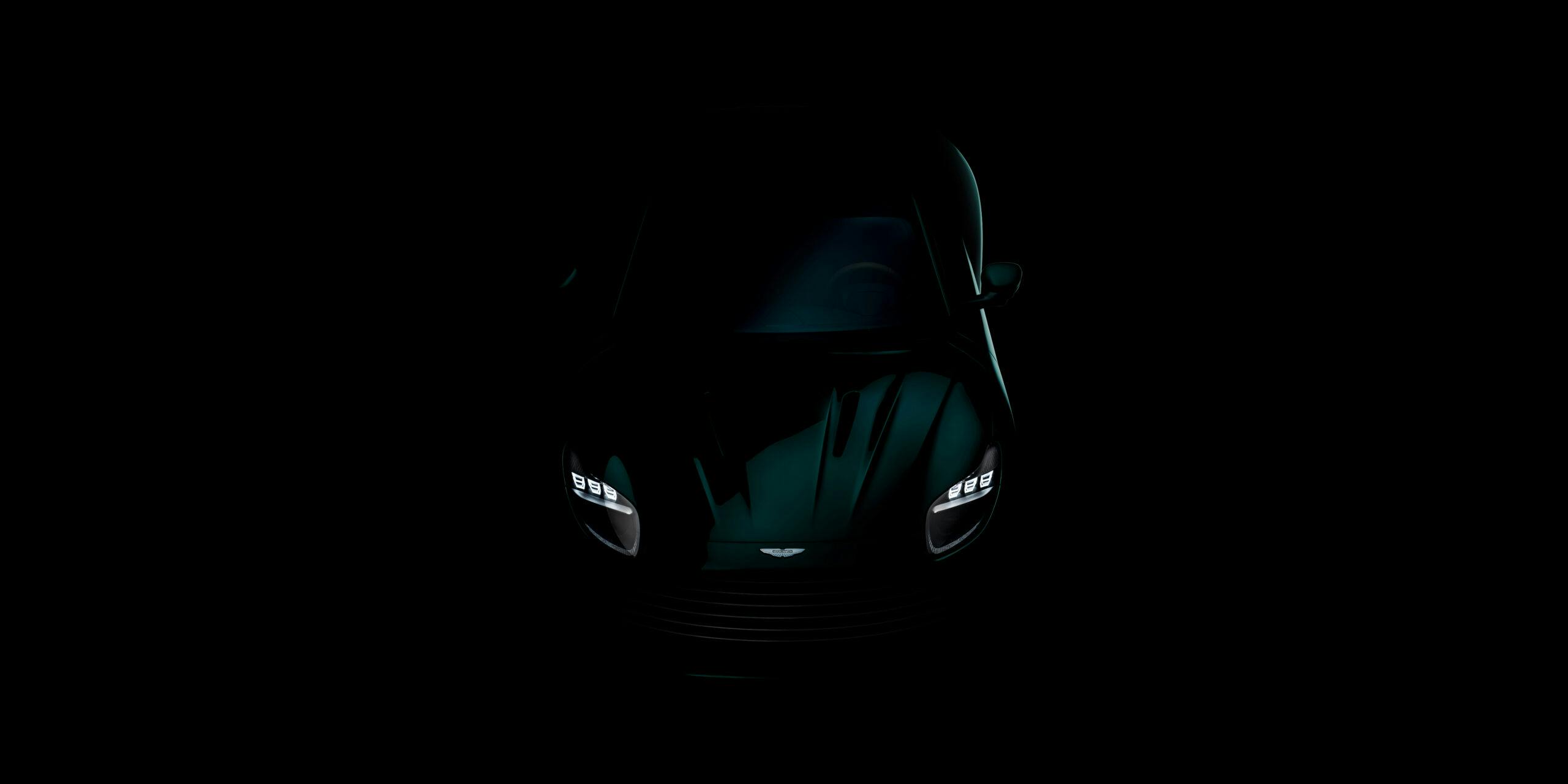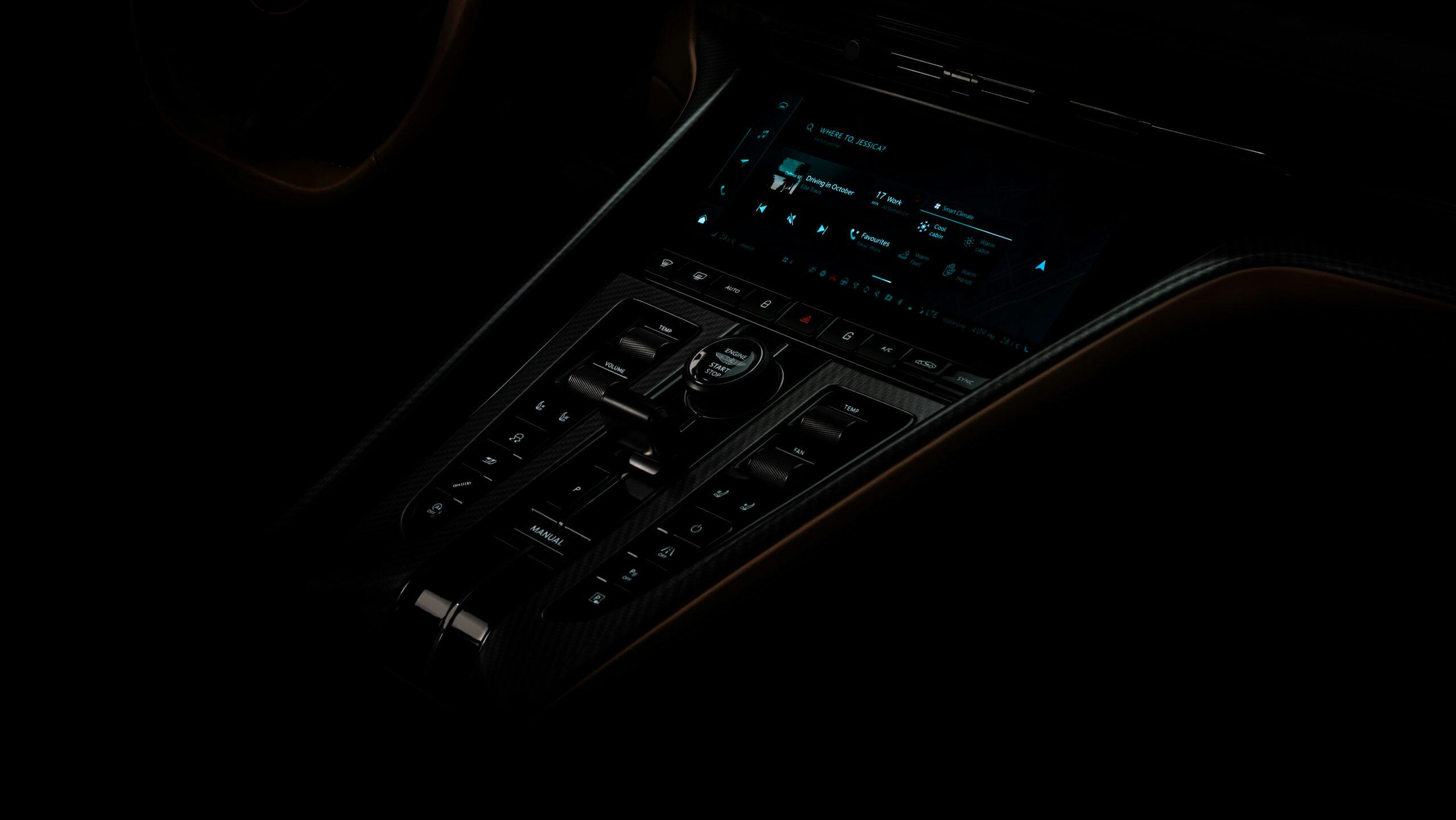NHTSA asks for recall of 67 million airbag parts, Aston teases DB12, and the fade of AM radio
NHTSA wants to recall 67 million airbag inflators
Intake: The National Highway Traffic Safety Administration has requested the recall of 67 million airbag inflators because it believes there is a safety defect, but supplier ARC Automotive rejected the U.S. regulator’s request, documents released on Friday show, says Automotive News.
ARC airbag inflators are in General Motors, Stellantis, BMW, Hyundai, and Kia vehicles. On its own, GM on Friday agreed to recall nearly a million vehicles with ARC inflators after a rupture in March resulted in facial injuries to a driver. “The GM recall covers 994,763 Buick Enclave, Chevrolet Traverse, and GMC Acadia vehicles from the 2014 through 2017 model years with modules produced by ARC Automotive Inc. Dealers will replace the driver’s air-bag module,” Automotive News says. This is separate from the massive Takata airbag recall.
Exhaust: GM said it learned of a report that the front driver’s airbag inflator in a 2017 Chevrolet Traverse ruptured during deployment in a crash. Tennessee-based ARC rejected NHTSA’s conclusion that a defect exists, saying the claim is based upon just seven field ruptures in the United States. NHTSA, the company said, “then asks ARC to prove a negative—that the 67 million inflators in this population are not defective.”
Those 67 million inflators were produced over 18 years. The company said it will continue to work with NHTSA and automakers to evaluate ruptures. — Steven Cole Smith
Aston Martin teases DB11 successor
Intake: Aston Martin is set to unveil the follow-up to its DB11 grand tourer on May 24. The British sports car maker is making some bold claims in advance of the reveal.
“This is no mere GT,” says the press release that accompanies. “Grand is not enough.” Judging from the silhouette shown in the teaser images released, the car, likely to be called the DB12, is an evolution of its forebear and not a ground-up new model. A report in Autocar suggests that it will come with more powerful versions of the V-8 and V-12 engines currently installed in the DB11, including the 770-hp 12-cylinder that features in the DBS 770 Ultimate.
A huge improvement should come in the shape of an updated infotainment system, replacing Aston’s current Mercedes-Benz system, which is past-its-sell-by-date. Aston Martin chairman Lawrence Stroll told Autocar that new system it will be distinctly different from Mercedes’s technology by using “our own faces, our own voice—a proper English accent.”
Exhaust: Aston Martin is riding high on a flying start to the 2023 Formula 1 season, and Stroll says that its F1-tribute DBX and Vantage models have attracted between 300 and 400 customers. He’ll be hoping the DB12 will accelerate sales further. — Nik Berg
86-strong classic collection goes to auction with no reserve


Intake: A single owner’s collection of classic Porsches, BMWs and Mercedes-Benzes is set to go under the hammer, and there are so many cars up for grabs that RM Sotheby’s had to split the auction into two.
The group of cars has been dubbed the Carrera Collection, after the 44 Porsches included in the sale. The auctions will take place on July 7th and 12th, in Switzerland and Italy respectively. Two 1973 Porsche 911 Carrera RS 2.7 Tourings are likely to fetch the highest prices. Other highlights include four BMW Z8s, an Alfa Romeo 8C Spider, and a trio of Mercedes-Benz 280 SE cabriolets.
Exhaust: None of the cars listed feature a reserve price, so they’re guaranteed to sell. But with so much choice here, could supply outpace demand, or will we see record prices? We’ll report back after this extraordinary sale. — NB
Flying car passes wind-tunnel testing

Intake: A flying car is one step closer to airborne reality, electric Brazilian planemaker Eve announced today. Eve, which is controlled by aircraft manufacturer Embraer, said it has successfully completed wind-tunnel testing of its fully electric flying vehicle. The company aims to start commercial operation of that vehicle in 2026, says Reuters.
The concept, called an electric vertical take-off and landing vehicle, or eVTOL, has been dubbed a flying taxi. “The information we obtained during this phase of development has helped us further refine the technical solutions of our eVTOL, before committing to production tooling and conforming prototypes,” said Luiz Valentini, Eve’s top technology officer.
Exhaust: Production has not yet begun, but Eve says it has a backlog of nearly 2800 orders, with development backed by investors such as United Airlines and Rolls-Royce. The wind-tunnel tests were completed in Switzerland using an eVTOL scale model. — SCS
AM radio continues to take it on the chin

Intake: Multiple manufacturers are removing AM radios from their cars, over protests from AM stations around the country. Automakers such as BMW, Mazda, Polestar, Rivian, Tesla, Volkswagen, and Volvo “are removing AM radios from new electric vehicles because electric [motors] can interfere with the sound of AM stations. And Ford is taking a bigger step, eliminating AM from all of its vehicles, electric or gas-operated,” says the Washington Post.
Exhaust: Some station owners and advertisers contend that losing access to the car dashboard will be a death blow to many of the nation’s more than 4000 AM stations — the possible demise of a core element of the country’s delivery system for news, political talk, coverage of weather emergencies, and foreign language programming.
“This is a tone-deaf display of complete ignorance about what AM radio means to Americans,” Michael Harrison, publisher of Talkers, a trade journal covering the talk radio industry, told the Post. “It’s not the end of the world for radio, but it is the loss of an iconic piece of American culture.” — SCS
Sierra Club: Some car dealers decline to sell EVs

Intake: The Sierra Club has complied a 15-page report titled A Nationwide Study of the Electric Vehicle Shopping Experience. Sierra club volunteers cold-called 800 car dealers and asked if they had EVs available for sale. Some “key findings” include the fact that 66 percent of auto dealers did not have a single EV available for sale.
Within that 66 percent, 44 percent reported they would offer an EV for sale if they could get one. Also within that group, 45 percent of those dealers reported they would not offer an EV for sale regardless of automaker allocation and supply chain constraints.
Exhaust: Mercedes had the best availability, with 90 percent of dealers having at least one EV in stock. Toyota and Honda had the worst EV availability. Only 11 percent of Honda dealers and 15 percent of Toyota dealers had an EV for sale. The survey did not differentiate between plug-in hybrids and electrics. — SCS
***
Check out the Hagerty Media homepage so you don’t miss a single story, or better yet, bookmark it. To get our best stories delivered right to your inbox, subscribe to our newsletters.






Another airbag recall! And the recall for my Ford F 250 Superduty has been sitting on my desk for over a year because Ford says it can’t (maybe don’t want to) find the parts to fix it! I am thinking of suing them if not repaired by the end of summer!
One would think there would be a way to keep AM radio on EV’s but there is no will to spend any money on the issue.
Regarding the airbag recall, I’ve gotta side with the airbag company, in the absence of more substantial info. 7 of 67 million is a 0.00001% failure rate to date, or rather 99.99999% have not failed. Unless NHTSA has hard evidence that there is a larger and provable issue covering the entire 18-year range, indicating that a large number will fail imminently (say all of those 7 showed signs of abnormal corrosion, showing potential for a bad alloy or coating, and were from different years in the range), then they are being a little ridiculous. Especially since this has not caused deaths. Maybe research and see if there was a specific range the 7 samples were from (like say all were produced in a 6 month period and delivered to GM only) for a targeted recall.
As for the AM radio, I get that some people/places use it for weather reports or traffic radio, among other things, but I can say that in my just shy of 40 years of life, I have never once used AM radio. Those things AM does provide I can and have easily gotten from alternative sources (even before the age of smartphones, and I didn’t even bother getting one of those until 2014). Sorry AM radio, but if it is any consolation, streaming radio (particularly off cell phone via CarPlay or Android Auto) will likely kill FM eventually as well, so you won’t be alone for long.
I read somewhere that a lady had been killed when her neck was sliced open. Severing the artery. If true? What would her husband think about this? But yes, this is a very small percentage for sure.
With GM recalling about a million cars with ARC airbags, this should result in a good statistical understanding of how bad the issues are. 1 million out of 67 million should be pretty representative. Once the data is captured from those 1 million airbags, it should be clear if a broader recall is needed or not.
My understanding is that the NHTSA got a black eye from the Takata airbag mess so are being overly proactive now. NHTSA can’t demand ARC recall airbags, part vendors don’t do that, and ARC is correct to say it’s the automakers’ job to enact a recall. GM being proactive is good, it’ll get the data.
A more useful statistic would be how many airbags have burst of the number deployed.
AM radio is irreplaceable when it comes to emergency broadcasting. When streaming is down (which is easy after a tornado or some such) and FM simply can’t reach out very far, AM radio shines. If for no other reason this should be enough to keep it in every car possible. Having lived through some things I would never want to be without it.
To address the replies (thanks for the feedback guys, I love spirited conversations like happen in these forums):
Jay-If someone has died from the airbag, it is unfortunate, though still only a single incidence (as I will mention below, if this is one death of say, 10,000 deployments, it is statistically insignificant).
Andrew-I agree there will be a large sample with the GM recall and will provide the needed sample, and I do agree that it is appropriate, as you stated, that manufacturers, not parts suppliers, run the recall at their discretion.
Tinkerah-I do agree that the 7 would be more interesting compared to airbag deployments, data we sadly don’t have on hand to discuss. Let’s say, for example, that 10,000 of the 67 million have deployed, then 7 of 10,000 would be a 0.07% deployment, which is more significant, but still not a reason for NHTSA to go after ARC, in my personal opinion. Now, 7 of 1000 or 7 of 100 would have me a little more concerned.
Lastly, Kelly-I do personally own 3 emergency AM/FM sets that are in my camping and emergency kits, I should have been clear I have never used AM in a vehicle but re-reading my comment I failed to state that (although to be honest, I have never needed to use those emergency radios either, even after tornadoes). I don’t mean to discount AM for its history in this area, but its utility/utilization vs cost in vehicles is getting limited. If the loss of in-dash access affects the AM market’s viability in lost advert dollars (and assuming it is considered essential infrastructure to emergency management) then alternate means of funding need to be identified for it, perhaps it could be subsidized by FEMA, or they can identify different markets to utilize AM frequencies to keep them alive (Microsoft led a study into using unused Radio and TV broadcast channels to carry OTA broadband internet to rural areas, so perhaps having AM frequencies being used for broadband with paying subscription customers, with a clause that they can be reactivated to AM emergency radio if needed)? In addition, perhaps additional/alternative means of emergency broadcast need to be identified and explored. The world is moving forward, and we must improvise, adapt, and overcome.
I never liked the idea of driving around with a quarter stick of dynamite ready to go off 16 inches from my face. Seems like planning for a crash to me. I spend every second of my time driving actively planning not to be involved in a crash. This is something I learned from 50 years of motorcycling. I have always felt that you could make cars a lot safer if you designed the car with the drivers seat on the front bumper!
Ken Purdy wrote a memorable article in the 60’s about the Mercer Raceabout being the safest car he’d ever driven. With a non-tempered monocle windscreen in your face, and two-wheel brakes activated by an outside lever, there was nothing to distract you from concentrating on your own survival.
Hafta admit I like that idea! Honestly I’m terrified of the bomb in my steering wheel. At 5’6″ and the wheel tilted all the way down that thing is aimed squarely at my nose.
Airbags are a concern, but they’re much better than the first generation. Those were indeed a problem in that regard, as they had specs dictated by congress. They were reportedly supposed to be able to protect a 160 lb. man going 30 mph while not wearing a seat belt. That meant that the airbags were large and smaller people sitting closer would be hit with a relatively dense wad of plastic not fully open. It was… sometimes catastrophic.
Modern ones are much smaller, slower opening, and designed to work in conjunction with seat belts, so they’re usually a very large help to the people they’re supposed to protect.
Thats why I have taken them out of every car I owened.
AM radio station representatives are living in a false reality. They need to take their playbook from printed media, because they are following the same course. I cannot recall the last time I tuned to an AM radio station. There’s absolutely no need. There are news, talk, NPR, etc. stations on FM. There are a million-and-one ways to get news, weather alerts, etc., without AM radio. The only listeners are basically Baby Boomers. Some people think AM radio is on life support and should be resuscitated, but it’s already dead.
AM radio travels MUCH further than FM, especially at night. AM stations have very broad reach and often in more remote places there simply are very few, if any, FM talk stations but likely AM talk stations can be received. Relying on streaming is also not always possible in more remote locations because cell service is spotty at best.
In larger metro areas, I totally agree with you, AM is kind of useless. But those same major metros areas are the ones which usually broadcast the AM talk stations and then the more rural areas far outside the metro are the ones who benefit.
Let me know how well streaming works after a tornado. AM radio is absolutely necessary from an emergency broadcast aspect and more than deserves to be saved for that reason alone.
I’m a Baby Boomer, so what, I’m now Chopped Liver? If I listen to a game, the news, or a traffic report on an AM station, I should be euthanized ’cause I’m useless? Is that it, Tim?
I read somewhere that a lady had been killed when her neck was sliced open. Severing the artery. If true? What would her husband think about this? But yes, this is a very small percentage for sure.
Sorry for the double post. My fingers and typing skills aren’t what they used to be.
I work in an industry that regularly interacts with various regulators and bureaucrats at the federal, state & local levels. When I read that NHTSA wanted ARC to “prove a negative”, I was unsurprised. At a core level, the NHTSA is taking a “guilty until proven innocent” stance, which is vastly common across our regulatory structures. This is especially true in California, where the significant percentage of my lived experience in the industry has taken place.
The petty, micro-managing attitude of a disturbingly high amount of regulators can be summed up thusly: You are guilty unless you can prove to my sole & fickle satisfaction that you are 110% innocent and it is on you to spend vast amounts of your time and money to fully comply with my every demand for information & analysis, no matter how small, because if you do not I will make your business’ life a living h-e-l-l.
we all know that flying cars (electric or otherwise) are possible but moving Traffic into the air will just cause more problems– Removing AM radio from cars will just be another way for car companies to increase Profits— Probably by finding ways to charge a monthly fee–